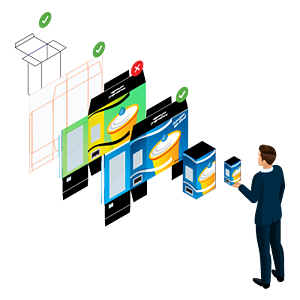Top 7 Tips to Improve Your Pharma Artwork Management

The pharmaceutical industry is one of the most competitive industries. It is also an industry that is heavily filled with new inventions or discoveries which in turn leads to regular changes. World Health Organisation has estimated that about 50% of recalls for products are for similar reasons. It is either for mislabeling, artwork error, or errors in labeling. This has put brands under constant pressure to keep up with the speed of the changing marketing and most of the burden of this pressure falls on the artwork departments. They are constantly under pressure to get their tasks right on the first time and at the right time of the product launches medical labels. This means that the risk of errors is inevitably higher and that is why pharmaceutical brands need to opt for pharma artwork management systems to leverage all the advantages of an automated system.

Let’s look at some tips on how to enhance your pharma artwork management.
Select the appropriate vendor who is a complaint
Your vendor needs to be able to understand and be fully knowledgeable about the Pharmaceutical Code of Practice Standard and should have past experience. A partner who has the knowledge and is accredited with the PS9000, ISO9001, or GMP guidelines. This will enable them to be compliant and in control of the regulations and standards.
The vendor should be able to understand the print process
A useful vendor will not just be experienced with the market regulations but also the technical aspect of the pharma artwork management process. Some suppliers are unable to do this and lag the requirements for printing.
Having knowledge and understanding about the right file build and the requirements for pre-press is detrimental. This is something your brand needs to look after while selecting an artwork supplier and missing out on this critical condition may hamper your brand’s growth.
Properly brief about your Pharma Artwork Management
It is important to make sure that the brief you provide about your artwork is correct and without errors. Any time of errors, mistakes, or omissions can prove to be dangerous. This will only increase the lead times and enhance costs. The mistakes can often be as small as a typographical error, incorrect drawings, wrong expiry dates, or even pack profiles that are incorrect. Even the smallest mistakes can lead to disaster and cost your brand precious time and money.
A brief should be clearly defined before further steps
Any kind of discourse is an absolute downfall for a brand. Discourse and confusion not just delay the process but also enable errors to take place. For this reason, it is important to set a clear definition of your brief before you outsource it.
Both your brand and the other party should agree on the source document and the rooting. Before the order is commenced the content of the brief should be accepted and agreed upon by both parties. This check and step should take place before the creation of any artwork.
Give opportunity for smooth changes and comments
As discussed above briefs and artworks should be clearly expressed and defined. Any annotation that is vague or ambiguous can lead to further delays in the process. Just as the brief has to be clear the changes and comments about the artwork should also be clearly defined.
Any changes in the artwork should be instantly and clearly visible to the departments and parties involved. Even the comments, feedbacks, and inputs should have complete visibility among the various stakeholders involved in the process.
The lead document should be the source document
In order to ensure that there is compliance at every step of the process, the source document has to be accepted as the lead document. It will act as a unifying element that will help to control and police the whole process and development of the artwork. This will enable reviewing the cycle and reduce the delays and lagging. Consistency and efficiency will only improve with this and so will the relationship of brands with their suppliers.
Your own working and the supplier’s system of artwork would be complementary
For any business to succeed all the departments and stakeholders involved should be in cognizance. There should be an understanding between the external and internal elements of a process for it to succeed. For example, when an artwork file is approved the print vendor should clearly understand that and not manipulate it anymore. There should not be any touchpoints in the Pharma Artwork Management process. These errors can be significantly reduced with the help of reliable automated systems.
Also Read: Nine Interesting Speed Cubes You Should Give A Try






